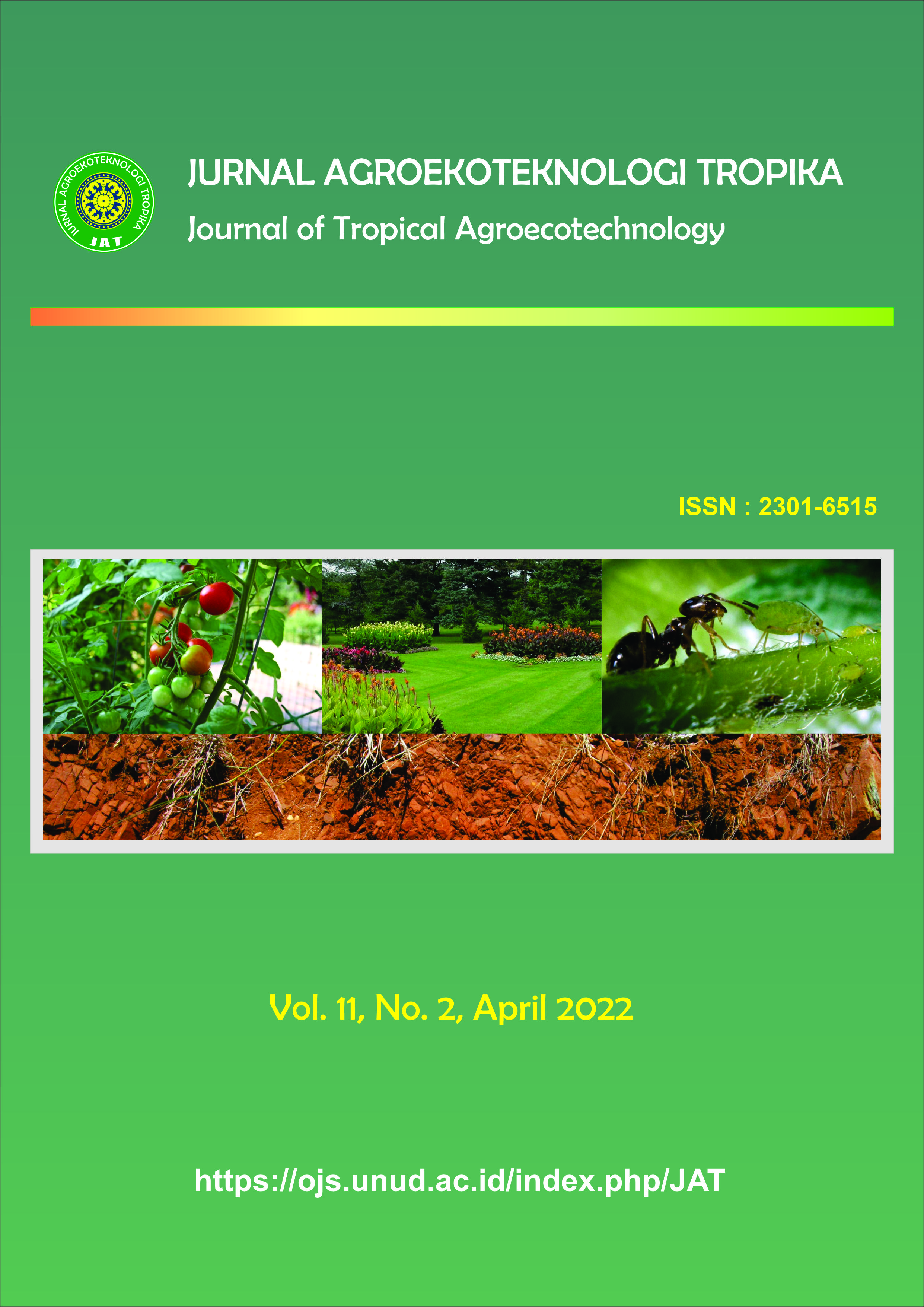Tingkat Kerentanan Berbagai Umur Tanaman Melon (Cucumis melo L.) terhadap Infeksi Potyvirus
Abstract
Susceptibility Levels of Various Ages of Melon Plants (Cucumis melo L.) Against Potyvirus Infection
Domestic melon production has not been able to fulfill the community. Pest disruption is one of the main causes of declining melon production so that the community's demand for melons is not fulfilled. Potyvirus is a virus that is often found in melon plants in Bali, but information about the development of this disease is very limited. This study aims to determine the effect of time on the rate of Potyvirus infection in melon (Cucumis melo L.) plants. The steps taken in this study were preparing plants, inoculating Potyvirus in plants, observing disease progression and conducting research in the laboratory using the RT-PCR (Reverse Transcription Polymerase Chain Reaction) test. The results showed that the younger the melon plants infected by Potyvirus, the faster the rate of infection and the more severe the symptoms caused. The rate of infection in plants treated with inoculation at the age of 2, 3, 4, 5, 6, 7 weeks after planting and without inoculation treatment was 0.96 respectively; 0.60; 0.53; 0.41; 0.30; 0.18 and 0. Melon plants with inoculation treatment of 2, 3 and 4 weeks after planting were very susceptible to Potyvirus infection, which showed signs of severe mosaicism and severe malformations. Melon plants with inoculation treatment 5, 6 and 7 weeks after planting were more resistant to Potyvirus infection, namely showing moderate mosaic symptoms and mild mosaicism, while plants that were not given inoculation treatment showed no symptoms. Detection of Potyvirus using the RT-PCR method using primers (CI-FOR / CI-REV) successfully amplified Potyvirus fragments in the presence of base bands measuring ±683 bp in samples A, B, C, D, E, and F.



